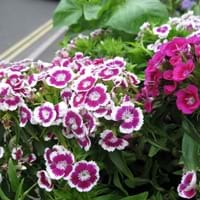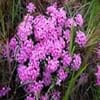Life Span
Perennial
Biennial and Perennial
Type
Broadleaf Evergreen
Flowering Plants
Origin
Hybrid origin, Japan
Europe, Northern Europe, Western Europe
Types
Bigleaf hydrangea, Hortensia, Smooth hydrangea, Oakleaf hydrangea, Annabelle
'Bellagio Apricot' begonia, 'Bellagio Blush' begonia, 'Bellagio Pink' begonia
Habitat
Forest edges, Hillside, Woods
Subtropical climates, Tropical regions
USDA Hardiness Zone
7-9
3-9
AHS Heat Zone
Not Available
9 - 1
Habit
Upright/Erect
Cushion/Mound-forming
Flower Color
Hot Pink
White, Yellow, Red, Pink, Light Pink, Rose, Dark Red, Orange Red
Flower Color Modifier
Bicolor
Bicolor
Fruit Color
Brown, Black
Not Available
Leaf Color in Spring
Dark Green
Light Green, Blue Green, Gray Green
Leaf Color in Summer
Dark Green
Light Green, Blue Green, Gray Green
Leaf Color in Fall
Dark Green
Light Green, Blue Green, Gray Green
Leaf Color in Winter
Dark Green
Light Green
Leaf Shape
Oblovate
Long Linear
Plant Season
Spring, Summer, Fall, Winter
Spring, Summer, Fall
Sunlight
Full Sun, Partial Sun, Partial shade
Full Sun, Partial Sun
Growth Rate
Medium
Medium
The pH of Soil
Acidic, Neutral
Neutral
Soil Drainage
Well drained
Well drained
Bloom Time
Fall, Late Fall, Early Winter, Winter
Early Spring, Spring, Late Spring
Tolerances
Not Available
Drought, Shade areas
Where to Plant?
Container, Ground
Container, Ground, Pot
How to Plant?
Seedlings, Stem Planting
Divison, Seedlings, Stem Planting
Plant Maintenance
Medium
Low
Watering Requirements
Not Available
Needs watering once a week
In Summer
Drought Tolerant
Moderate
In Spring
Moderate
Moderate
In Winter
Average Water
Average Water
Soil pH
Acidic, Neutral
Neutral
Soil Drainage Capacity
Well drained
Well drained
Sun Exposure
Full Sun, Partial Sun, Partial shade
Full Sun, Partial Sun
Pruning
Remove damaged leaves, Remove dead branches, Remove dead leaves
Cut or pinch the stems, Remove damaged leaves, Remove dead branches, Remove dead leaves
Fertilizers
All-Purpose Liquid Fertilizer
All-Purpose Liquid Fertilizer, fertilize in growing season, fertilize in spring, fertilize in summer
Pests and Diseases
Red blotch
Fusarium wilt, Gray mold, Leaf spot, Root rot, Rust, Slugs
Plant Tolerance
Not Available
Drought, Shade areas
Flower Petal Number
Semi-Double
Single, Double, Semi-Double
Foliage Texture
Medium
Fine
Foliage Sheen
Glossy
Matte
Attracts
Bees, Flies
Not Available
Allergy
Chest tightness, Diarrhea, Dizziness, Nausea, Vomiting
Asthma
Aesthetic Uses
Not Available
Beautification, Bouquets, Cottage Garden
Beauty Benefits
Not Available
Not Available
Edible Uses
Not Available
Yes
Environmental Uses
Air purification
Air purification
Medicinal Uses
Fever, Kidney problems, Urinary tract problems
Bronchitis, Candidiasis, Cold, Digestive disorders, Dysentry, Haemoptysis, Liver problems, Menstrual Disorders, Scrofula, Swelling
Part of Plant Used
Flowers, Root
Whole plant
Other Uses
Not Available
Food for animals
Used As Indoor Plant
Not Available
Yes
Used As Outdoor Plant
Yes
Yes
Garden Design
Container, Cutflower, Feature Plant, Hedges, Mixed Border, Topiary, Bonsai, Espalier
Bedding Plant, Container, Cutflower, Feature Plant, Groundcover, Hanging Basket, Mixed Border, Rock Garden / Wall
Botanical Name
CAMELLIA hiemalis 'Kanjiro'
DIANTHUS barbatus 'Heart Attack'
Common Name
Kanjiro Camellia, Snow Camellia
Heart Attack Sweet William, Sweet William
In Hindi
Hydrangea
स्वीट विलियम
In German
Hortensie
Bartn
In French
Hortensia
sweet william
In Spanish
Hortensia
Guillermo dulce
In Greek
υδραγεία
είδος γαρύφαλλου
In Portuguese
Hortênsia
william doce
In Polish
Hortensja
słodki William
In Latin
Hibiscus
amaranthus
Phylum
Not Available
Magnoliophyta
Class
Not Available
Magnoliopsida
Order
Not Available
Caryophyllales
Family
Theaceae
Caryophyllaceae
Genus
Not Available
Dianthus
Clade
Not Available
Angiosperms, Core eudicots, Eudicots
Tribe
Not Available
Not Available
Subfamily
Not Available
Not Available
Number of Species
Not Available
Not Available
Properties of Kanjiro Camellia and Sweet William
Wondering what are the properties of Kanjiro Camellia and Sweet William? We provide you with everything About Kanjiro Camellia and Sweet William. Kanjiro Camellia doesn't have thorns and Sweet William doesn't have thorns. Also Kanjiro Camellia does not have fragrant flowers. Kanjiro Camellia has allergic reactions like Chest tightness, Diarrhea, Dizziness, Nausea and Vomiting and Sweet William has allergic reactions like Chest tightness, Diarrhea, Dizziness, Nausea and Vomiting. Compare all the properties and characteristics of these two plants. Find out which of these plant can be used as indoor plant. If you are interested to decorate your house and garden, find out aesthetic uses, compare them and select the plant which will beautify your surrounding. Along with beautification, try comparing medicinal and edible uses of Kanjiro Camellia and Sweet William and you can choose the plant having best and most benefits.
Season and Care of Kanjiro Camellia and Sweet William
Season and care of Kanjiro Camellia and Sweet William is important to know. While considering everything about Kanjiro Camellia and Sweet William Care, growing season is an essential factor. Kanjiro Camellia season is Spring, Summer, Fall and Winter and Sweet William season is Spring, Summer, Fall and Winter. The type of soil for Kanjiro Camellia is Loam and for Sweet William is Loam while the PH of soil for Kanjiro Camellia is Acidic, Neutral and for Sweet William is Neutral.
Kanjiro Camellia and Sweet William Physical Information
Kanjiro Camellia and Sweet William physical information is very important for comparison. Kanjiro Camellia height is 335.00 cm and width 255.00 cm whereas Sweet William height is 45.00 cm and width 30.00 cm. The color specification of Kanjiro Camellia and Sweet William are as follows:
Kanjiro Camellia flower color: Hot Pink
Kanjiro Camellia leaf color: Dark Green
Sweet William flower color: White, Yellow, Red, Pink, Light Pink, Rose, Dark Red and Orange Red
- Sweet William leaf color: Light Green, Blue Green and Gray Green
Care of Kanjiro Camellia and Sweet William
Care of Kanjiro Camellia and Sweet William include pruning, fertilizers, watering etc. Kanjiro Camellia pruning is done Remove damaged leaves, Remove dead branches and Remove dead leaves and Sweet William pruning is done Cut or pinch the stems, Remove damaged leaves, Remove dead branches and Remove dead leaves. In summer Kanjiro Camellia needs Drought Tolerant and in winter, it needs Average Water. Whereas, in summer Sweet William needs Moderate and in winter, it needs Average Water.


